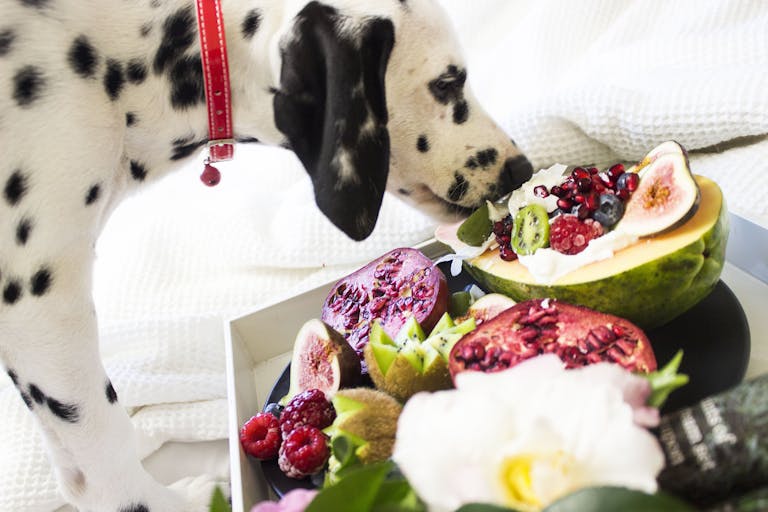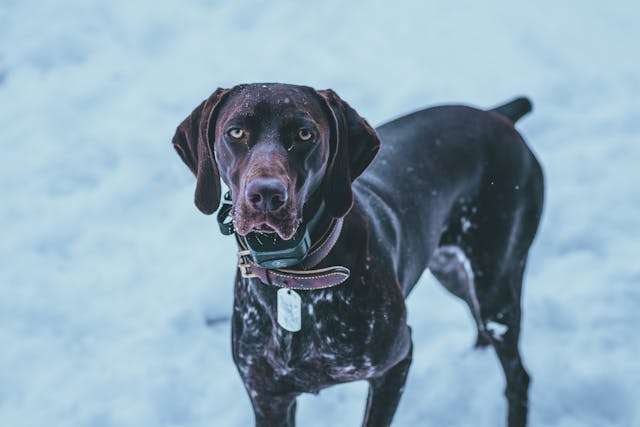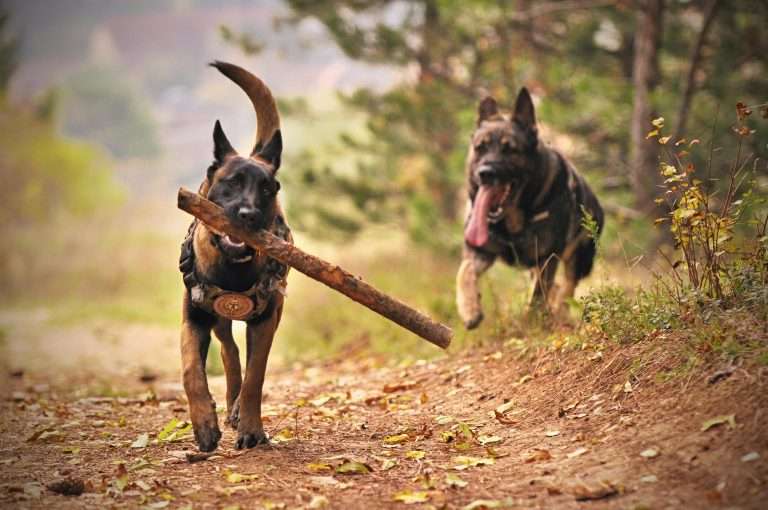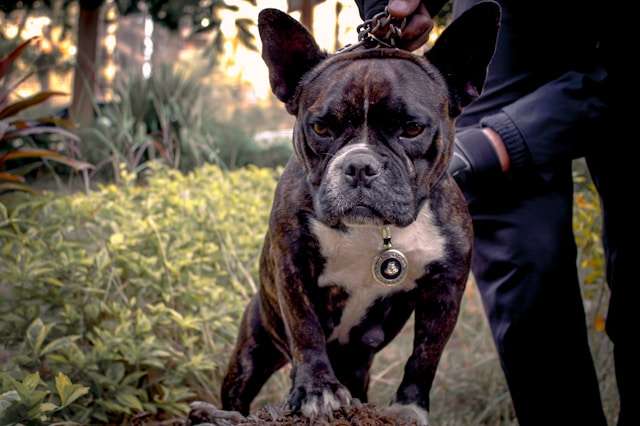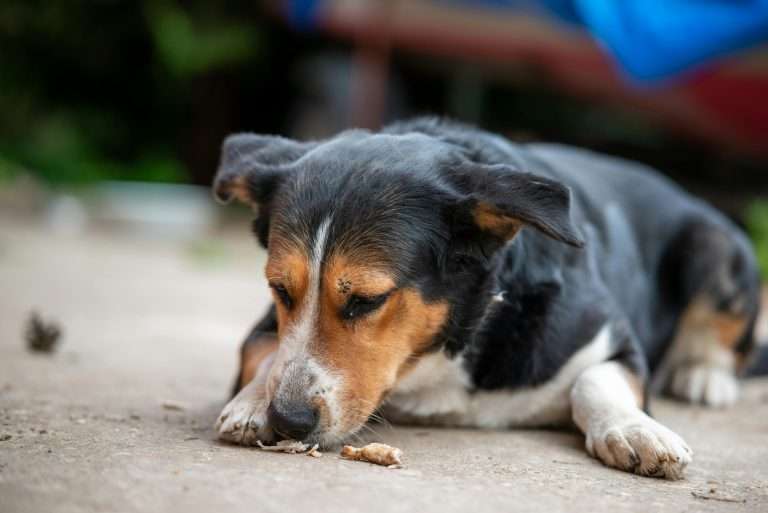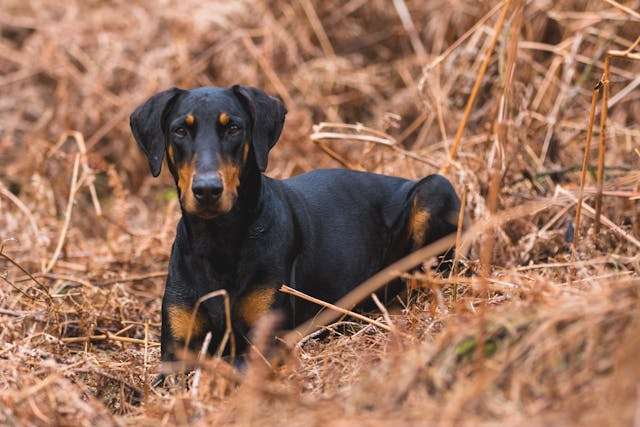Top 10 Hypoallergenic Dog Breeds for Allergy Sufferers in 2024

Top 10 Hypoallergenic Dog Breeds. Do you have allergies but love dogs? You’re not alone. Finding the perfect furry friend can be challenging when allergens stand in the way. Luckily, hypoallergenic dog breeds offer a solution. These breeds shed less hair and produce less dander, making them ideal for sensitive owners.
This guide shares the top 10 allergy-friendly breeds to help you find your perfect match. For more tips on choosing the best breed, check out Find The Best Dog Breed For You 2024.
Table of Contents
What Are Hypoallergenic Dog Breeds?
Do you love dogs but constantly battle sneezing, itching, or watery eyes? Hypoallergenic dog breeds might be the solution. While no dog is entirely allergen-free, these breeds produce fewer allergens, making life easier for allergy sufferers. Let’s break down what makes a breed hypoallergenic and explore common misconceptions about them.
Understanding Allergies Caused by Dogs
Dog allergies aren’t caused by fur alone, though that’s a common belief. The real culprits are proteins in a dog’s dander (dead skin cells), saliva, and urine. When these particles become airborne or stick to surfaces, they can trigger allergic reactions in some people.
Here’s how it works:
- Dander: Similar to dust, dander is lightweight and easy to inhale, making it a top irritant.
- Saliva: Dogs spread allergens when lick their fur, toys, or you.
- Urine: Residues left behind after accidents can trigger reactions if not thoroughly cleaned.
Hypoallergenic breeds typically produce less dander or shed less fur, helping to minimize allergens in the home. Don’t forget that regular grooming and cleaning play a considerable role in managing allergy symptoms. For additional tips, check out The Ultimate Guide To Labradoodle Care, as Labradoodles are a popular hypoallergenic option.
Myths vs. Facts About Hypoallergenic Breeds
There’s a lot of misinformation about hypoallergenic dogs. Let’s sort fact from fiction:
- Myth #1: They’re completely allergen-free.
Fact: No dog is 100% hypoallergenic. However, breeds like Poodles and Bichon Frises produce fewer allergens, which can help reduce reactions. Curious about specific hypoallergenic breeds? The AKC Hypoallergenic Dogs guide is a great resource. - Myth #2: Hair length determines allergens.
Fact: It’s not about the length but the amount of shedding. Dogs that shed less trap dander in their coat instead of releasing it into the air. - Myth #3: Hypoallergenic breeds are low maintenance.
Fact: Many require frequent grooming to keep their coat free from dander and matting. For examples, see 30 ‘Hypoallergenic’ Dogs That Don’t Shed a Lot.
Being informed about allergens and understanding the quirks of hypoallergenic breeds can make owning a dog more manageable, even for allergy-sensitive families.
The Top 10 Hypoallergenic Dog Breeds
Living with dog allergies doesn’t mean giving up on the joy of owning a dog. Certain breeds are better suited for people with allergies, thanks to their low-shedding coats and minimal dander production. Let’s explore 10 hypoallergenic breeds that could be your perfect match.
Poodle

Photo by RDNE Stock project
Poodles are available in three sizes: Standard, Miniature, and Toy. Each size shares the same iconic curly coat, which traps dander and minimizes shedding. This breed is not only allergy-friendly but also highly intelligent and versatile. Poodles require regular grooming to prevent matting and keep their coat in top condition. Their playful and loving nature makes them an excellent companion for families and individuals. Want to learn more about hypoallergenic dogs like the Poodle? Check out Hypoallergenic Dogs 101.
Bichon Frise
The Bichon Frise is known for its soft, fluffy coat and cheerful demeanor. Their unique coat doesn’t shed much, making them a top choice for individuals with allergies. They’re incredibly friendly, social, and adaptable, thriving in both large homes and small apartments. For tips on caring for this breed, visit our guide on the Bichon Frise.
Portuguese Water Dog
Energetic and intelligent, Portuguese Water Dogs are perfect for active households. They require regular exercise to stay happy and healthy. Their dense, curly coat is low-shedding, ideal for allergy sufferers. These dogs love water and thrive in activities like swimming or agility courses.
Maltese
The Maltese is a small dog with a big personality. Their long, silky coat is low-shedding but requires regular grooming to prevent tangling. These affectionate pups are perfect lap dogs and love spending time with their owners. Their size makes them well-suited for apartments or smaller homes.
Schnauzer
Schnauzers come in Miniature, Standard, and Giant sizes, offering options for different living spaces. Known for their wiry coat, they shed minimally and are relatively easy to groom. Schnauzers are highly adaptable and intelligent, making them great companions for families and singles.
Basenji
The Basenji is a unique breed known as the “barkless dog.” These dogs barely shed and only need occasional grooming, making them a practical choice for allergy sufferers. With their alert and curious personality, the Basenji are independent and loyal.
Lagotto Romagnolo
Bred initially as truffle hunters, the Lagotto Romagnolo is a rare but excellent hypoallergenic option. They’re knowledgeable and trainable, with a water-resistant coat that sheds very little. Their natural work ethic and friendly demeanor make them an excellent choice for active dog owners.
Yorkshire Terrier
Yorkshire Terriers, or Yorkies, are among the most popular small dog breeds. Their silky coat doesn’t shed much and requires regular brushing. Despite their tiny size, Yorkies are full of energy and charisma. They make charming companions for those who love a bold, spunky dog.
Shih Tzu

Photo by Sharath G.
The Shih Tzu’s luxurious coat is hypoallergenic but has high grooming needs. These dogs love attention and enjoy being around their families, making them ideal for households with lots of love to give. For additional care tips on hypoallergenic dogs, explore Hypoallergenic Breeds.
Chinese Crested
The Chinese Crested is perhaps the most unique-looking of all hypoallergenic breeds. They come in two varieties: Hairless and Powderpuff. Both types are low-shedding, but the Hairless version requires frequent skincare attention. These quirky dogs are affectionate and thrive on companionship, making them perfect for allergy-sensitive pet owners.
There’s a hypoallergenic breed for every lifestyle, whether seeking a playful, active pup or a calm and affectionate lap companion.
Tips for Choosing a Hypoallergenic Dog
Choosing the right hypoallergenic dog isn’t just about reducing allergens but finding a furry friend that fits perfectly into your lifestyle. While hypoallergenic breeds produce fewer allergens, looking beyond the label is essential. Here are some practical tips to help you make an informed decision.
Researching Breeds: Encourage thorough research on each breed’s characteristics.
Not all hypoallergenic breeds are created equal. Each has unique traits, including energy levels, grooming needs, and temperament. Carefully research breeds to understand their compatibility with your home and family life. For example, a high-energy breed like the Portuguese Water Dog might be great for active households, whereas a Maltese might thrive in a quieter setting.
Understanding characteristics like grooming frequency is equally essential. Hypoallergenic doesn’t mean “low maintenance.” Many breeds, like the Poodle or Bichon Frise, require regular brushing and grooming to maintain their coats and minimize allergens. Check out Discover The Best Types For Every Lifestyle for a broader perspective.
Meeting the Dog Before Adoption: Advise potential owners to interact with the dog.
Before committing to a new pet, arrange to meet the dog in person. Allergic reactions can vary greatly based on the dog and the individual. Visit a breeder, shelter, or rescue to spend time with the dog and see how your body reacts. This step is crucial to avoid bringing home a pet that unintentionally aggravates allergies. Think of it as a test drive; you wouldn’t buy a car without trying it out, right?
Additionally, ask the breeder or rescue group for tips on managing allergies specific to the breed. Many breeders are well-versed in grooming practices to reduce allergen load and can offer valuable advice.
Consulting with Allergists: Suggest consulting with a healthcare professional for tailored advice
If you have a history of allergies, consulting an allergist before adopting a dog is intelligent. Allergists can help identify your triggers—whether it’s dander, saliva, or something else—and provide customized recommendations for managing reactions. You can even inquire about allergy shots or other treatments to make dog ownership more comfortable.
Some allergists may also suggest spending an extended period with the dog to monitor reactions over time. If you’re weighing your options, reviewing expert insights like those from 5 Things You Should Know Before Choosing a Hypoallergenic Dog could offer additional guidance.
Finding a hypoallergenic dog that fits your lifestyle involves research, interaction, and expert insight. Take your time to evaluate all factors to ensure a happy and sneeze-free life with your new furry friend.
Caring for Hypoallergenic Dogs
Owning a hypoallergenic dog is a blessing for allergy sufferers, but it does come with responsibilities. Although these unique breeds produce fewer allergens, diligent care is essential to maintain an allergy-friendly home. Let’s explore two key areas vital for their well-being and keeping allergens at bay.
Regular Grooming: The Role of Grooming in Allergen Control
Hypoallergenic dogs often require regular grooming for aesthetics and to control allergens. Grooming helps remove trapped dander, loose fur, and dirt that can irritate allergies. While their coats trap allergens, they stay on the dog unless adequately cleaned.
Consider these tips for proper grooming:
- Brush Your Dog Frequently: Use proper brushes for your dog’s coat type. For most hypoallergenic dogs, brushing removes loose hairs and prevents matting. Brushes like slicker brushes or de-shedding tools are effective.
- Schedule Baths Regularly: Bathing your dog every two to four weeks can minimize allergens. Many pet shampoos are formulated to reduce dander and prevent itchy skin.
- Focus on the Right Grooming Products: Hypoallergenic shampoos and conditioners can enhance coat health while reducing allergens.
For more breed-specific grooming tips, visit Best Dog Food for Bichon Frise, where grooming for sensitive breeds is discussed.
Cleaning and Home Environment: Managing Allergens Indoors
Keeping your home clean is just as critical as grooming your dog. Allergens can be collected in carpets, furniture, and air filters, leading to sneezing fits and discomfort. Adopting a strategic cleaning routine can significantly reduce allergens in the environment.
Here are practical cleaning strategies:
- Vacuum Frequently: Use a vacuum with a HEPA filter to trap pet dander and other allergens. Clean carpets, rugs, and upholstered furniture regularly.
- Wash Dog Bedding Weekly: Your dog’s bed is a hot spot for allergens. Clean it with fragrance-free, hypoallergenic detergents.
- Run an Air Purifier: An air purifier helps capture airborne dander particles. This is especially important for households with central air systems.
- Designate Pet-Free Zones: Keep certain areas like bedrooms off-limits to your dog to minimize allergen exposure where it matters most.
- Clean Paws After Walks: Wipe down your pet’s paws to prevent bringing in pollen, dirt, or other allergens from outside.
For more insights on proper care, check out this detailed resource on How to Care for Hypoallergenic Dogs.
Managing allergens at home while caring for a hypoallergenic dog requires consistent efforts. A clean home and a well-groomed dog ensure a healthier, happier space for everyone.
Frequently Asked Questions About Hypoallergenic Dog Breeds
Curious about owning a hypoallergenic dog but still have questions? You’re not alone. Here, we’ll tackle common concerns about these unique, allergy-friendly breeds. Whether you’re wondering how they work for allergy sufferers or how to care for them, we’ve got you covered.
Are Hypoallergenic Dogs Allergy-Free?
No dog is completely free of allergens. Hypoallergenic breeds, however, produce fewer allergens, making life more comfortable for those with sensitivities. Dogs like Poodles and Bichon Frises are good examples. Their low-shedding coats help reduce the spread of dander. Interested in learning more? Check out Facts About Hypoallergenic Dogs.
What Causes Allergies in Dogs?
Allergies are typically triggered by proteins in a dog’s dander, saliva, and urine—not just the fur. Hypoallergenic dogs, known for shedding less, keep dander more contained, which might lower allergen spread in your home. Learn further about these breeds on Hypoallergenic Dog Breeds.
Do All Hypoallergenic Breeds Need High Maintenance?
Not all hypoallergenic dogs are low maintenance. Some, like the Poodle, require regular grooming to maintain their coats and reduce allergens. If time for grooming is a concern, consider breeds like the Basenji, which shed minimally and need less grooming. For details on such breeds, visit The Ultimate Guide To Poodles.
Can I Still Be Allergic to a Hypoallergenic Dog?
Yes, it’s possible. Everyone’s sensitivity level is different. Some people may experience allergies depending on the breed or individual dog. Spending time with a dog before adoption can help determine compatibility. For tips on testing compatibility, you may also find this article helpful: Hypoallergenic Dogs: Myths and Facts You Need to Know.
What Can I Do to Minimize Allergies at Home?
Managing allergies goes beyond breed choice. Clean your home regularly, use air purifiers, and groom your dog often. Frequently washing dog bedding and vacuuming with a HEPA filter can make a huge difference. Explore more care tips on Dog Breed Guide: Find Your Perfect Companion.
Stay informed to enjoy your furry companion without worrying about constant allergies. It’s all about choosing the right breed and establishing a good care routine for your lifestyle!
Conclusion: Finding Your Perfect Hypoallergenic Companion
Finding the right hypoallergenic dog doesn’t eliminate the responsibility of proper care and preparation. It’s about creating a harmonious environment where you and your furry friend can thrive. With lower dander production and reduced shedding, these breeds are an excellent choice for allergy sufferers. However, they aren’t a one-size-fits-all solution—each breed has its personality, energy level, and care needs.
For additional breed-specific insights, you might enjoy reading about pet care essentials. Dive into our guide on Are Bull Terriers Good Dogs? to explore breed compatibility. Check out Best Dry Dog Food Options Reviewed for diet and well-being, which also mentions hypoallergenic meal plans.
Photo by Nikolai Ulltang, showcasing a thoughtful Pekingese.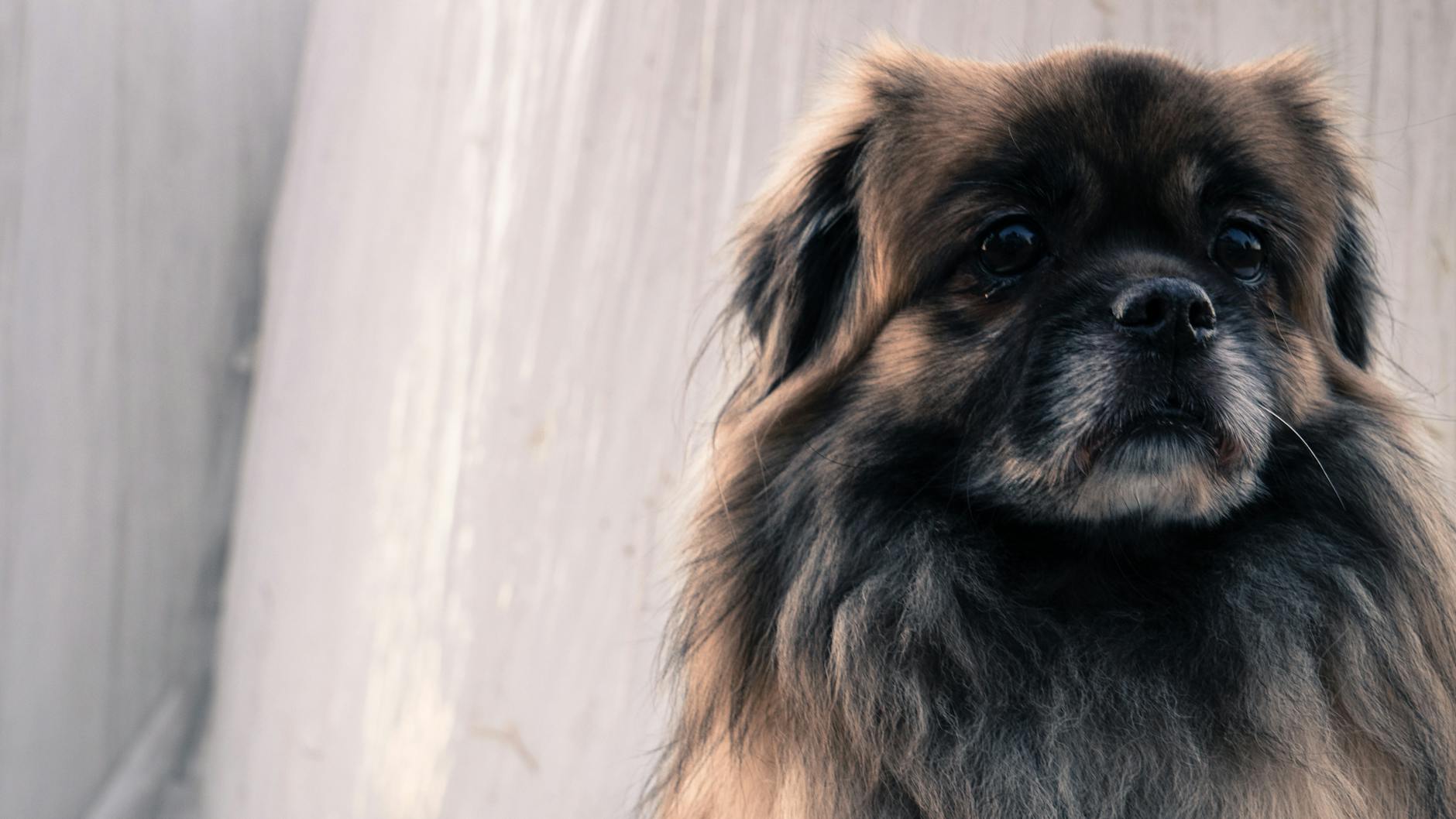
Ready to learn even more? Explore respected resources like the AKC guide on hypoallergenic dogs and get inspired to find your ideal match.

